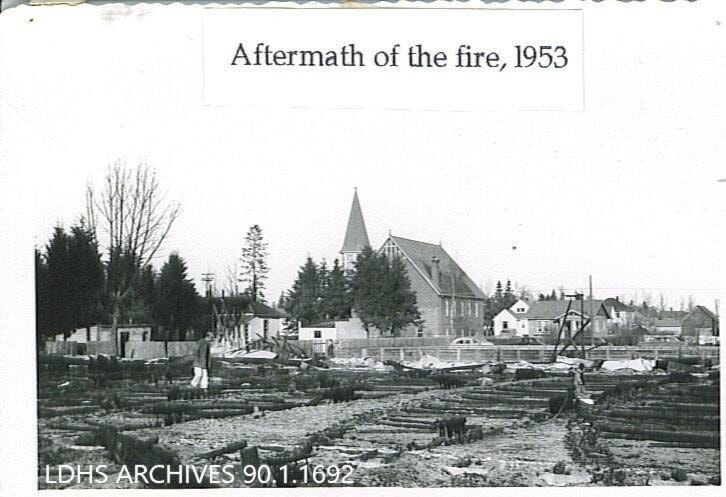Fire shaped the community of Lacombe and it’s downtown core over the first few decades of development.
Lacombe as we know it looked drastically different at the turn of the 19th century, with wood-frame construction and plank sidewalks prevalent. This, coupled with human behaviours, like disposing ashes from kitchen stoves in the back alley, careless smokers and general unawareness of dangerous chemicals and a lack of water easily available created a cataclysmic environment.
While fires were common in the early days, the first major fire to impact our community was in September of 1906.
The entirety of the commercial area on Nanton Street, east along the south side of Barnett was destroyed, except for the Flatiron Building (Merchant’s Bank at the time).
In response, the town enacted an ordinance requiring that all new constructions in the downtown core be brick and that all frame building left be sheathed in brick. This lead to a local boom in brick yards and the beautiful Edwardian buildings that are now an integral part of downtown Lacombe.
This was not the end of fires for downtown Lacombe. In 1907 there were two fires and another one in 1909. A few years later, in 1911 the town was rocked by the explosion and fire at the Train Station, the explosion was caused by improper handling of photographic materials.
In 1930 another disastrous fire hit, this time at the Canadian Union College (Burman University).
There are not too many buildings in the downtown core that have not been affected by fire at one point in history.
The Campbell Block was affected by fire in 1940, in 1953 the Lacombe Memorial Centre was destroyed and the Lacombe Creamery was also destroyed in a 1957 fire.
Then in March of 1958, the Park Inn Esso fire occurred. It was considered to be one of the largest fires in Lacombe at the time since the destruction of the Victorian Hotel.
The most recent fire in the downtown core was in 1995 when the post office.
